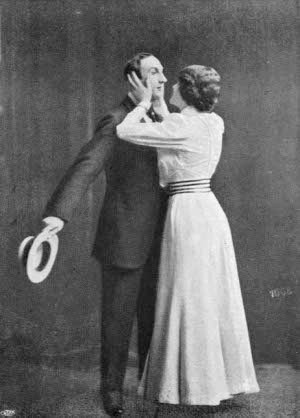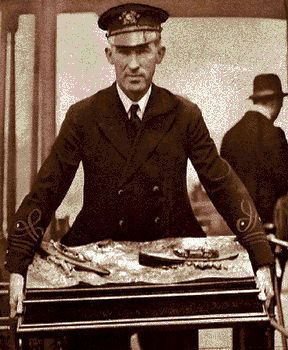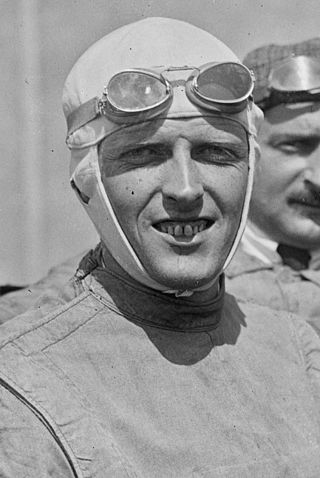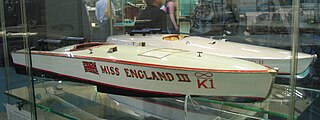Miss England was the name applied to a series of speedboats used by Henry Segrave and Kaye Don to contest world water speed records in the 1920s and 1930s.
Mary may refer to:
Crusader or Crusaders may refer to:
Henry may refer to:

A motorboat, speedboat or powerboat is a boat that is exclusively powered by an engine.
King Charles most commonly refers to:
Miss America is an annual competition open to women.

You Never Can Tell is an 1897 four-act play by George Bernard Shaw that debuted at the Royalty Theatre. It was published as part of a volume of Shaw's plays entitled Plays Pleasant.

Garfield Arthur "Gar" Wood was an American inventor, entrepreneur, and championship motorboat builder and racer who held the world water speed record on several occasions. He was the first man to travel over 100 miles per hour (160 km/h) on water.
The term aero-engined refers to a vehicle other than an aircraft that is powered by an aircraft engine:

Sir Henry O'Neal de Hane Segrave was an early British pioneer in land speed and water speed records. Segrave, who set three land and one water record, was the first person to hold both titles simultaneously and the first person to travel at over 200 miles per hour (320 km/h) in a land vehicle. He died in an accident in 1930 shortly after setting a new world water speed record on Windermere in the Lake District, England. The Segrave Trophy was established to commemorate his life.
Miss Afghanistan may refer to:
Margaret of Scotland may refer to:

The Vittoriale degli italiani is a hillside estate in the town of Gardone Riviera overlooking Lake Garda in province of Brescia, in Lombardy. It is where the Italian poet and novelist Gabriele D'Annunzio lived after his defenestration in 1922 until his death in 1938. The estate consists of the residence of D'Annunzio called the Prioria (priory), an amphitheatre, the protected cruiser Puglia set into a hillside, a boathouse containing the MAS vessel used by D'Annunzio in 1918 and a circular mausoleum. Its grounds are now part of the Grandi Giardini Italiani.

Miss England II was the second of a series of speedboats used by Henry Segrave and Kaye Don to contest world water speed records in the 1920s and 1930s.

Miss England III was the last of a series of speedboats used by Henry Segrave and Kaye Don to contest world water speed records in the 1920s and 1930s. She was the first craft in the Lloyds Unlimited Group of high-performance speedboats created to make attempts on the water speed record, and consequently wore the registration 'K1' with the corresponding 'infinity' symbol.

Miss England I was the first of a series of speedboats used by Henry Segrave and Kaye Don to contest world water speed records in the 1920s and 1930s.
USS Manatee has been the name of two United States Navy vessels and may refer to either one of the following:

Kaye Ernest Donsky, better known by his nom de courseKaye Don, was an Irish world record breaking car and speedboat racer. He became a motorcycle dealer on his retirement from road racing and set up Ambassador Motorcycles.
Francis Francis may refer to:
George F. Crouch (1879–1959) was an American boat designer. He worked for the Dodge Boat Works in Newport News. Three speedboats built to his designs won the first three places in the 1924 Gold Cup of the American Power Boat Association. In 1939 his design for a torpedo boat was one of two approved by the US Navy for prototype construction; both designs were found in trials to be obsolescent, and a British design by Hubert Scott-Paine was chosen instead.